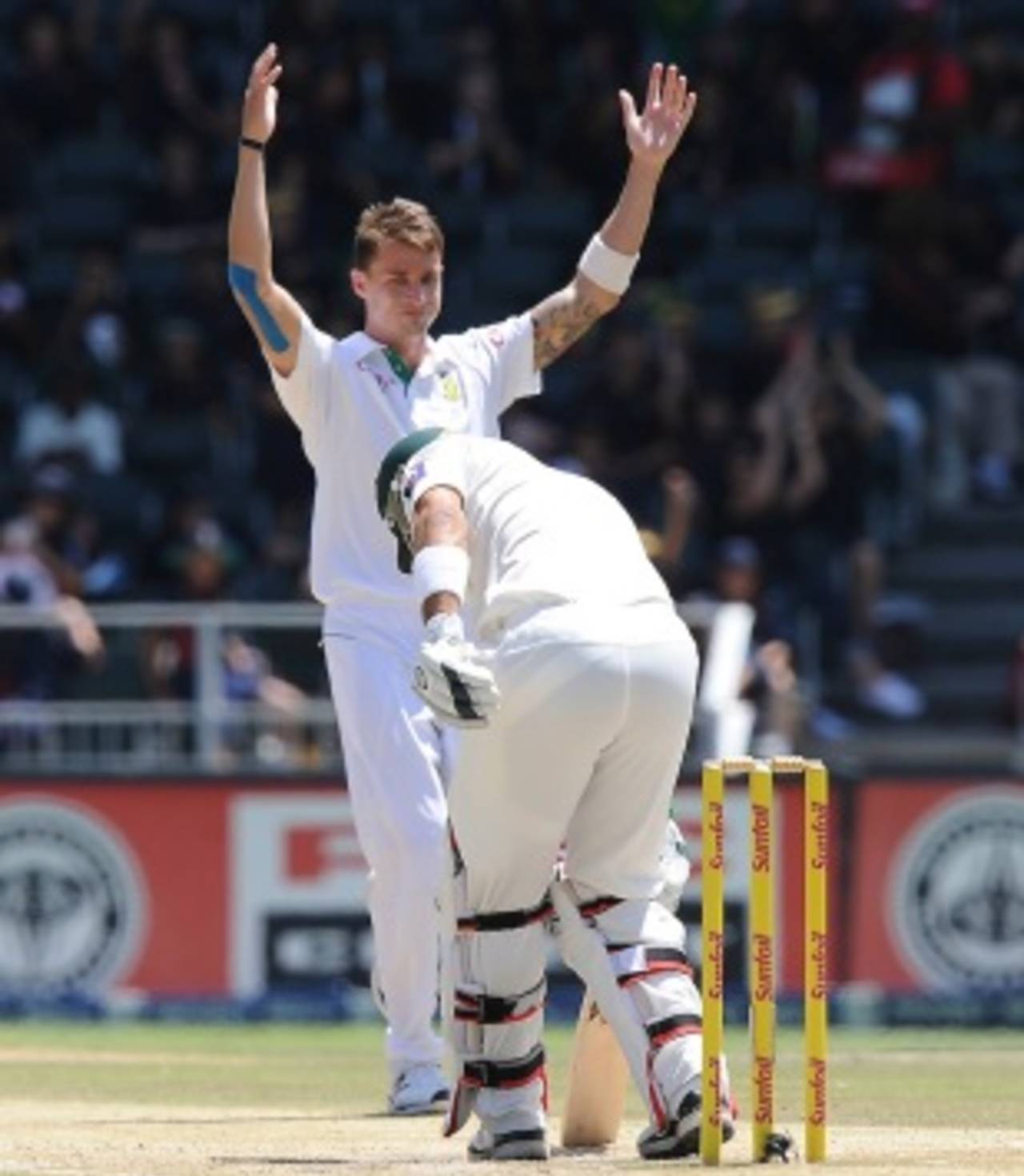This week, Confectionery Stallers, a Multistat. Back despite popular demand. Prompted by some idle research into the career peaks of great players (more of which in a future blog) (including exciting news on how Imran Khan took 154 wickets at an average of 14.8 in Tests from 1981 to 1986) (and thrilling revelations about how Martin Crowe was the universe's best batsman over an eight-year period) (plus exclusive proof that, whilst the mechanised slaughter of the First World War might not have been a bundle of laughs for most of the planet, it transformed Australia's Charlie Macartney into an unstoppable run machine).
20: The number of bowlers, other than Dale Steyn, who have taken 100 or more Test wickets since January 1, 2007. The year 2007 was Steyn's first great year in Tests, since when he has taken 291 at an average of 21.2. Those are tidy figures in any era ‒ the legendary SF Barnes, often touted as the greatest bowler of all time, averaged 21.5 in his 20 Ashes Tests. They are extraordinary figures in Steyn's era. None of the other bowlers to have
taken 100 Test wickets since the beginning of 2007 has averaged under 28, and 12 of them have averaged over 30.
Clearly, only Steyn was inspired to great heights of bowling-average excellence by the accession of Romania and Bulgaria to the European Union. (Thanks be to Wikipedia.)
Excluding Steyn, the next 20 highest wicket-takers of the past six years one month and 11 days, have a collective average of 31.6.
20: The number of bowlers who took 100 or more Test wickets in the
preceding six years, from January 2001 to December 2006. Three of them averaged under 22 (Murali, McGrath and Shoaib), three more under 28 (Warne, Pollock and Ntini), and six more under 30. Collectively, the top 20 wicket-takers of 2001-2006 averaged 28.3 - 10% lower than Steyn's 20 leading contemporaries.
20: The number of bowlers who took 100 or more Test wickets in the six years that preceded those preceding six years, from
January 1995 to December 2000. Of those 20, four averaged under 22 (Donald, Pollock, McGrath and Ambrose), four more under 25 (Walsh, Murali, Wasim, and Streak). Thirteen of the 20 averaged under 28, and nestled in just behind them was a tidy legspinner called Warne (28.4). Only three averaged over 30. Collectively, the top 20 wicket-takers of 1995-2000 averaged 25.2 - 20% better than the top-20 non-Steyn bowlers of the past six years.
Conclusion 1: Dale Steyn is a good bowler. Seldom, if ever, has a bowler been so pre-eminent over his contemporaries for such a long period as Steyn has been in his six-years-and-counting-long pomp. He has taken 46 more wickets than the next most wicketous bowler (Jimmy Anderson), and besides the Burnley Boomeranger, only Graeme Swann and Mitchell Johnson are within 100 victims of Steyn. None of the 27 next highest wicket-takers since 2007 (79 wickets or more) averages within six runs per wicket of Steyn's figure - putting him almost 30% ahead of his nearest contemporary rival in terms of average.
Conclusion 2: Conclusion 1 will probably have to be rewritten after Thursday's second Test between South Africa and Pakistan. Vernon Philander currently has 78 wickets at an average of 17.4, so he looks set to break the 80-wickets-since-2007-at-an-average-less-than-six-more-than-Dale-Steyn's barrier - provided that he takes his next two wickets for fewer than 812 runs. On Philander's current form, this seems a fairly safe bet. On the Pakistani batsmen's current form, this seems the safest bet since Usain Bolt wagered Inzamam-ul-Haq that the great if rotund batsman could not beat him ‒ the proud owner of six Olympic gold medals for running very fast for not very long ‒ in a 100-metre race. On a track without a downhill slope. Or a big plate of lunch at the finishing line.
Conclusion 3: Conclusion 1 will basically still stand, even with a rewrite. Steyn is a phenomenon.
Conclusion 4: The world's leading bowlers have had a tougher time in the last six years than at any point in Test history. I have the figures to prove it, and I will lodge them with the relevant legal authorities. Or ramble on about them in a future Confectionery Stall. Are today's bowlers less brilliant than their predecessors, or more tired, or simply unlucky to be bowling in more batsman-friendly conditions and against opponents armed with unfairly boingy superbats, or already rectifying their statistics and wreaking vengeance on a batting generation rendered technically frail by a generation of placid pitches and the sultry economics of slogging the ball over midwicket? Or all of the above?
Conclusion 5: Batting was tough at the end of the second millennium. From the start of the 1992-93 season, when Warne, Kumble and Murali broke through to revolutionise the international game with their various revolutionary revolutions, to the end of the year 2000 (the last year in which the world posted a collective batting average below 30),
28 bowlers took 70 or more Test wickets at an average of under 30 - five Australians, four from England, South Africa and West Indies, three from Pakistan, New Zealand and India, plus Sri Lanka's Murali and Heath Streak of Zimbabwe. Almost every team took the field with proven potent weapons in their bowling attacks. The
two leading batsmen in the world over this period of extreme bowling excellence - Steve Waugh (average 57.3, 20 centuries in 87 Tests) and Sachin Tendulkar (61.3, 21 centuries in 63 Tests).
● This blog is suitable for use as a Valentine's Day gift. It has been certified as providing a 75% probability of romantic success by the United Nations Committee of International Seduction Technicians (UNCIST).
Andy Zaltzman is a stand-up comedian, a regular on the BBC Radio 4, and a writer
